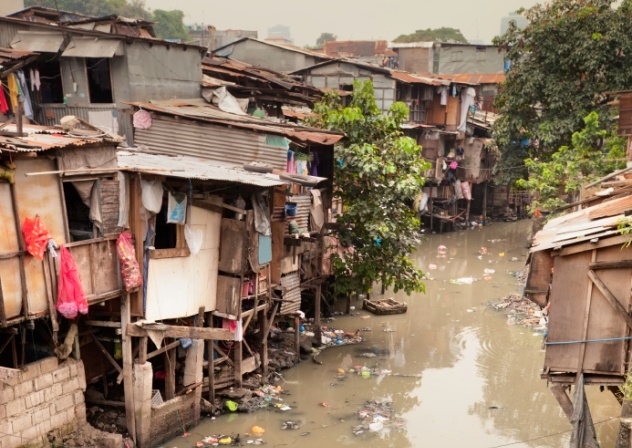 Mysteries
Mysteries  Mysteries
Mysteries  History
History 10 Surprising Stories About the Texas Rangers
 Humans
Humans 10 Philosophers Who Were Driven Mad by Their Own Theories
 Miscellaneous
Miscellaneous 10 Video-Game-Worthy Weapons and Armors from History
 Weird Stuff
Weird Stuff 10 Psychics Who Accurately Predicted Wartime Events
 The Arts
The Arts 10 Pieces of Art Inspired by a Broken Heart
 Health
Health 10 Science Fiction-Sounding New Medical Treatments
 History
History 10 Surprising Facts About the Father of Submarine Warfare
 Space
Space Ten Astonishing New Insights into Alien Worlds
 Weird Stuff
Weird Stuff 10 Bizarre Summer Solstice Rituals Still Practiced Today
 Mysteries
Mysteries Top 10 Haunting Facts About the Ghost Ship MV Alta
 History
History 10 Surprising Stories About the Texas Rangers
 Humans
Humans 10 Philosophers Who Were Driven Mad by Their Own Theories
Who's Behind Listverse?

Jamie Frater
Head Editor
Jamie founded Listverse due to an insatiable desire to share fascinating, obscure, and bizarre facts. He has been a guest speaker on numerous national radio and television stations and is a five time published author.
More About Us Miscellaneous
Miscellaneous 10 Video-Game-Worthy Weapons and Armors from History
 Weird Stuff
Weird Stuff 10 Psychics Who Accurately Predicted Wartime Events
 The Arts
The Arts 10 Pieces of Art Inspired by a Broken Heart
 Health
Health 10 Science Fiction-Sounding New Medical Treatments
 History
History 10 Surprising Facts About the Father of Submarine Warfare
 Space
Space Ten Astonishing New Insights into Alien Worlds
 Weird Stuff
Weird Stuff 10 Bizarre Summer Solstice Rituals Still Practiced Today
10 Major Social Problems That Could Be Fixed With Innovative Solutions
The difference between where human civilization started and where it is today is mind-boggling. Despite our experiences and great achievements, there are still a lot of problems that plague contemporary society. In order to tackle these problems, innovation is going to be needed. The ideas in this list go against the norm or what is expected, but are they too radical? Or could they help save the world?
10 Youth Unemployment
Youth unemployment is a major problem in many countries. In the United States, youth employment has gone down in the past five years, but it is still at 11.1 percent, while the overall unemployment rate is just 5.5 percent. In Canada, the youth unemployment rate is 15.5 percent, while the national average is about half that. It’s even worse in Europe, with almost a quarter of people between the ages of 18 and 24 unemployed. One way to stem this problem is for employers to offer young people a shortened workweek. Instead of a full-time job, they would start off at 80 percent of the workload and paycheck. This would create 10–20 percent more jobs in the market.
The reason to direct this initiative at young people instead of implementing it for everyone is a phenomenon called the endowment effect. It is the theory that people get attached to possession, money, and privilege, and once someone has those things, it’s hard to take them away. But young people won’t have that problem, because there is nothing to take away from them; they gain 80 percent of the job.
A shortened workweek for a large segment of the workforce has also been suggested as a solution to aid the economy. A shorter workweek would theoretically lower a person’s carbon footprint, improve employee morale, reduce unemployment, reduce the cost of childcare, and improve the economy.
9 Climate Change

According to researchers, the damage from climate change is irreversible, but it is stoppable. In order to even slow it down, some innovative ideas are going to be needed. One of the more interesting ideas is from a geoengineering team called the SPICE project (Stratospheric Particle Injection for Climate Engineering) from the United Kingdom. They are looking to help slow down climate change by making an “artificial volcano.”
The inspiration for the project came from the aftermath of the 1991 eruption of Mount Pinatubo in the Philippines. During the eruption, 20 million tons of sulfate particles were spewed into the atmosphere, which cooled the Earth by half a degree for the next 18 months. SPICE’s plan is to use a hose on a tethered balloon. Through the hose, they would pump some type of particle into the air that would reflect sunlight and cool down the planet.
Environmental groups have been critical of geoengineering and SPICE in particular. They are worried that geoengineering may affect the ecosystem and weather patterns. Undeterred, Project SPICE is currently looking for the most suitable particle and the best delivery system to hopefully cool down the planet and slow down the effects of climate change.
8 Gun Control
One of Chris Rock’s most famous jokes, which was featured in Bowling for Columbine, is his bullet control bit. He said that the way to control gun violence is to make bullets outrageously expensive. While it is an incredibly insightful joke, bullet control was actually put forth by New York Senator Daniel Patrick Moynihan in 1993. His idea to stem gun violence was to put an exorbitant tax on certain types of bullets. He wasn’t going to tax bullets that were generally used in target practice or hunting, but he definitely would put them on other types of ammunition, like hollow points. Moynihan wanted to make a box of 20 bullets cost $1,500. The argument against overpriced ammo was that the government would be interfering with the free market.
Another possible solution for stopping some gun violence is to use smart gun technology. These smart guns would ensure that only an individual, or a few people, could fire the gun. This type of technology, which was utilized by James Bond in Skyfall, has been around for a few years, and a number of companies have developed different techniques to ensure that only registered people can fire it. One technology utilizes fingerprints. Another company uses a wristwatch that sends off a frequency to the gun and activates it. Yet another uses hand biometrics, and those are just a few. These guns could significantly cut down the 11,000 deaths caused by stolen guns. That number doesn’t even include police officers who are killed in the line of duty with their own gun.
Smart guns are not sold in the United States, despite studies that have shown that most gun owners support the idea. The reason they aren’t sold is essentially because safety is not a selling point when it comes to guns. Gun owners would rather have immediate access to a reliable gun. Also, strong supporters of the Second Amendment think that this could lead to stronger control over the sale and use of firearms.
7 Refugees
The Syrian refugee crisis is currently putting strain on a lot of countries, but the world has had a massive displacement problem for quite some time. Currently, there are 60 million displaced people, and 20 million of them are refugees. No matter where the millions of refugees end up, it will be a complicated ordeal for the hosting country and for the refugees themselves.
One solution to the problem may be to simply give refugees their own new country. The “Refugee Nation,” suggested by Israeli real estate millionaire Jason Buzi, would involve buying underpopulated and underdeveloped land somewhere in the world and then making it a place where refugees can flee to and get their lives started again.
Critics have said that the plan is flawed because it’s based on exclusivity and trying to keep people out. While there is definitely some truth to that, a permanent refugee nation has a lot of humanitarian benefits as well. Notably, a working nation with an economy, permanent housing, and social services is much better than the inhumane refugee camps in which people find themselves living for years without a job and relying on aid. Conversely, refugees would be able to work and live in the Refugee Nation, meaning that less aid will be needed in the long run. The ultimate goal would be for the Refugee Nation to develop its own organic government.
Of course, creating a new nation from scratch with millions of refugees from different countries would be an incredibly complex task. Besides logistics, it would also require a lot of compromise between nations with conflicting views on how to govern.
6 Homelessness
Homelessness is one of the oldest problems in the world, but it really took off during the Industrial Revolution. In the US, which has the highest GDP in the world, there were over 610,000 people who were in homeless shelters on any given night in January 2013. Almost a quarter of them were children under age 18.
There are a few suggestions on how homelessness can be tackled. One of the more innovative ways is simply to build permanent housing where people can live for free. That happened in Medicine Hat, Alberta, and as a result, it will be the first city in North America to eliminate homelessness. Medicine Hat will provide free housing to anyone who has to stay in an emergency center for more than 10 days if they have do not have a safe place to go afterward.
The logic behind permanent housing makes fiscal sense as well, because it is much more cost-effective than traditional homeless shelters. In Medicine Hat, if someone were to live on the street, it could cost the government up to $100,000 in related services. While free, permanent homes would only cost the city about $20,000 per person. Utah has a similar program, and they found that the cost of housing someone in permanent homes was $10,000–$12,000, while it was about $20,000 if they were living on the street and in shelters.
Feasibility is another problem, but what’s interesting is that the United States has 14.2 million abandoned houses scattered within its borders. Even a fraction of these abandoned buildings could be converted into housing for the homeless. This is exactly how a nonprofit organization called Breaking Ground tackles homelessness. They fix dilapidated buildings in New York City and make them high-quality transitional apartments, complete with social services for its residences. Their first project was converting the Times Square Hotel in 1994, and it is still open today.
Of course, some people will argue that this is just the government giving free houses to lazy people, but this is an unfortunate stigma connected to homelessness. Many people are homeless due to mental illness, not because they are lazy.
5 The Prison System
In most places in the United States, when someone is charged with a crime, the judge may choose to impose bail, which requires the accused to put up a certain amount of money as collateral to guarantee that they appear for their trial. Alternatively, they can await trial either in a county jail or a maximum security prison.
The bail system has become a major problem among people with low income because they may not be able to afford bail. The problem is so rampant that in January 2015, 730,000 people, most of whom were nonviolent offenders, were imprisoned for the simple fact that they couldn’t afford bail. In places like New Jersey, 40 percent of all incarcerated people are there because they couldn’t afford bail. In Riker’s Island, a maximum security prison, about 85 percent of detainees are simply awaiting trial. This problem is a huge contributing factor to the overcrowding of the US prison system, and it also cost $22 billion per year to house all of the people who are in jail because they couldn’t afford to post bail.
Besides the pressure on the prison system, locking someone up because they can’t afford bail can be disastrous to the arrestee’s life. While sitting in prison, even without being convicted, they will also probably lose their job. With the loss of a family member, some inmates’ families may have to rely more on social benefits, putting even more strain on the system. Finally, people will often plead guilty even if they are innocent because if they plead not guilty and wait to go to trial, they’ll have to sit in prison for months.
One possible solution is simply to eliminate the bail system for people who can’t afford it. This will decrease the amount of people in prison, and it keeps innocent and nonviolent offenders out of prison altogether. (There’s even a precedent for not charging bail in the US, as Washington, DC, has pretty much eliminated bail for those who can’t afford it.) In lieu of bail, pretrial service specialists would decide if someone is a flight risk, could be a danger to the public, or both. If they’re not, they’d be sent home, possibly being given an ankle monitor or having to do drug tests. When the court date is coming up, pretrial services would call the person to remind them to show up at their court date. These systems are cheaper, easier, and much more humane than imprisoning people who haven’t been convicted of crimes solely because they’re poor.
4 Declining Postal Services
The postal service was once a vital part of civilized life. But since the Internet has become more popular, mail has decreased in volume, and private mail services have become more popular. As a result, the United States Postal Service (USPS) announced that they lost $5.1 billion in the 2015 fiscal year. Other countries like Canada and Australia have a similar problem. Yet, the mail service is still a necessity, especially to people who don’t use computers.
In order to make the post office relevant in contemporary times, some post offices in Europe and Asia offer banking services to generate revenue. Looking to this model, US presidential candidate Bernie Sanders has suggested converting post offices into banks. It would be relatively inexpensive because the USPS already has a large network with outlets in almost every city and town in the United States.
Converting post offices to banks would have a twofold effect: It would hopefully make the USPS profitable, and it would help Americans with low incomes. Many low-income Americans can’t get traditional banking services because banks don’t want them as customers. Instead, they are forced to go to check-cashing outlets that blatantly exploit them with outrageous fees and service charges. And this isn’t just a small-scale problem: 20–40 percent of Americans have used these check-cashing places.
3 Food Production
One of the biggest fears among people is overpopulation. While most cities won’t look like Blade Runner, there is one major problem that will come with the projected growth of people: feeding everyone. According to projections by the United Nations, the population of Earth will be 9.6 billion by 2050, and if we stay on our current trajectory for food production, we won’t have enough food to feed everyone. (Obviously, our food production has kept pace with our population in the past, despite recurring doomsday predictions.) Over the next 35 years, production will rise 38–67 percent, but it needs to rise 60–110 percent.
Researchers at MIT are looking to solve this problem through a project called CityFARM. The project is seeking to make urban farms more efficient through data science and monitoring every individual plant with sensors that “listen” to the crops. In the experimental lab at MIT, plants are monitored by 30 sensors, which send information back to a computer every eight seconds regarding how much carbon and nutrients the crops need. Using the sensors, the crops will get everything they need in low quantities, making the process of growing food much more efficient. In fact, it will use 98 percent less water than conventional farms. It will also quadruple the growth speed of vegetables while eliminating the need for chemical fertilizers and pesticides. Finally, the nutrient density of the crops will be doubled, and the flavor can be strengthened or changed. Then, once the ideal “recipe” is ready, the data is loaded onto an open source database, where anyone can download it to grow their own crops by plugging the data into their own farm.
Besides making the process of growing crops more efficient, CityFARM will also eliminate another big problem, which is the shipment of food. Sometimes, food is shipped long distances, a wasteful use of resources that leaves a large carbon footprint. Using the CityFARM technology, every city could have one block dedicated to these farms, and it would feed the entire population. The leader of the project, Caleb Harper, says that the plan is to build one billion of these tiny urban farms in cities around the world.
2 Water Scarcity
It may be shocking to people in first-world countries, who defecate and urinate in clean water and flush it down the toilet, that 783 million people do not have access to clean water. In addition to that, 2.5 billion people do not have access to adequate sanitation. Looking to solve both problems is Peter Janicki’s Omniprocessor, which extracts water from human waste.
Sewer sludge is put into the Omniprocessor, where it is boiled in a large tube. The water vapor escapes from the waste and goes into a cleaning system inside the machine. Within minutes, it is filtered, and clean water is available. One machine can continually provide clean water to 100,000 people. But what really makes the Omniprocessor so innovative is that the leftover waste is turned into steam, which powers the machine. If there is leftover power, it goes to powering the community.
The Omniprocessor is personally supported by Bill Gates, who drank its water and said he would drink it every day. The project to build and install them throughout the world is also supported by the Gates Foundation.
1 Third-World Poverty

Would you notice if a tiny tax, cheaper than a cup of coffee, was tacked on each time you made a large luxury purchase? For example, would you notice $1.50 being taken off a vacation you spent $1,500 on? Most people probably wouldn’t notice or care, and while it may not be noticeable to the consumer, all of that money combined could mean billions of dollars for people living in poverty. Philippe Douste-Blazy, a French cardiologist and a special adviser to the secretary general of the UN in charge of innovative financing for development, tested this theory using a service charge on tickets for flights out of France. The service charge was €1 (about US$1.50), and between 2006 and 2014, they made $2 billion and received no complaints about the levy.
Of course, these “invisible donations” can be used to fund a whole host of projects. Currently, Douste-Blazy has been using the funds from the airline tickets on initiatives to fight HIV and AIDS, tuberculosis, and malaria in third-world countries. He says that public health is a cornerstone of a good economic system. If people are healthy, they can go to school, get a job, and contribute to an economy, which in turn grows the country’s GDP. Douste-Blazy hopes that this type of financing could lead to greater global stabilization.
Robert Grimminck is a Canadian freelance writer. You can friend him on Facebook, follow him on Twitter or on Pinterest, or visit his website.








